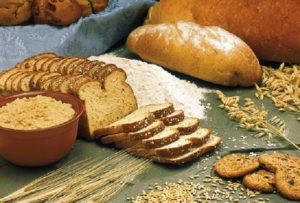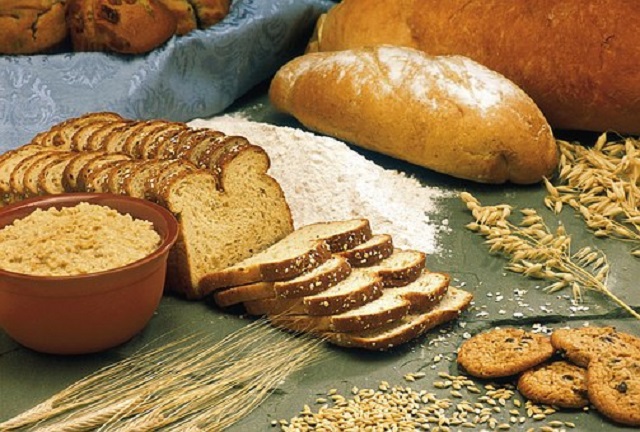September is Whole Grains Month. Will County Health Department Registered Dietitian/WIC Nutritionist Ruth Wernert recently spoke about the importance of focusing on whole grains, when we are constantly hearing so much about people cutting back on grains and carbohydrates (“carbs”), and following low carbohydrate diets for weight loss.
According to Wernert, there is confusion about carbohydrates (starches and sugars), grains, and healthy eating. She says carbohydrates and grains are often seen as the “bad guys,” but in reality they are an important and efficient source of energy for our bodies and part of a balanced diet. The key, Wernert says, is making healthy choices and watching portion sizes.
Wernert emphasized that not all grain products are equal, and that the main purpose of Whole Grains Month is to celebrate the benefits and varieties of whole grains, as well as sharing ideas about how to include them as a tasty and nutritious part of everyday eating.
The most common whole grains we hear about are whole wheat flour, brown rice, rolled oaks, barley, and corn. Overall, however, there are about 15 whole grains in the marketplace. These days, for example, we are hearing more about quinoa, amaranth, and teff both in magazines and on cooking shows.
Whole grains have three layers on the grain seed: the bran, the germ (and in this case a very good “germ”), and the endosperm. These layers contain many important nutrients: fiber, a variety of B vitamins, minerals such as iron, magnesium and selenium; proteins, and antioxidants. Eating whole grains is linked with better intestinal health, helping control blood sugars, reducing cholesterol and the risk of heart disease, obesity, and some cancers. Whole grains will also help you feel full and more satisfied.
Wernert says that when whole grains are refined, the outer layers are ground off to make a softer grain (such as white flour and white rice), making it easier to cook as well as having a longer storage life. However, those nutrients that are tucked into the outer layers are then lost. Some of these nutrients (B vitamins and iron) are added back when the grains are fortified, but they are still short on the original fiber, minerals, proteins, and antioxidants.
The U.S. Dietary Guidelines recommend we eat at least half our grains as whole grains. The Women, Infant and Child Nutrition Program (WIC) sponsored by the Will County Health Department includes whole grain products and cereals as part of its food package.
Some ideas for eating half our grains as whole grains is to start substituting whole grains for the refined ones you are used to.
For example, you can make a sandwich with whole grain bread on one side and your regular bread on the other and call it a “checkerboard sandwich”. You can also mix brown rice with white rice, or mix whole wheat pasta with white pasta. In addition, you can experiment with different types of crackers.
Mixing together whole grain breakfast cereals and more refined cereals for breakfast, or in a baggie for a quick snack when you are out and about, is also a good strategy. In addition, Wernert says families can choose to eat whole grain cereals during the week, and then have a “Saturday cereal” day when they eat a more refined cereal.
Whole grains can be added to soups (barley), salads (quinoa, noodles), muffins and cookies (oatmeal), and also in meatloaf or meatballs.
Another suggestion is to eat more rolled oats for breakfast, and emphasize popcorn (limiting the salt and butter) for a snack. Corn tortillas are also recommended.
Wernert also advises you to be a “label reader.” When buying whole grains products look for the words “100% whole” near the product name on the label. Examples would include “100% whole wheat” or “100% whole oat” cereal. And then read the ingredients list. The whole grain should be at the beginning of the list. Also, a brown color bread is not always a whole grain bread. Sometimes molasses or other ingredients are used to make refined grains a darker color.
There is also an additional asset for consumers these days. They can look for the “Whole Grain Stamp” on grain products such as bread, pasta, rice, and crackers. The stamp is a quick way to tell if it is a good source of whole grain.
For more on whole grain diet information, recipes, and portion sizes; Wernert recommends Choosemyplate.gov, Eatright.org and the American Heart Association website (www.heart.org).
More information on the Will County Health Department WIC Program and other services can be found at willcountyhealth.org.

